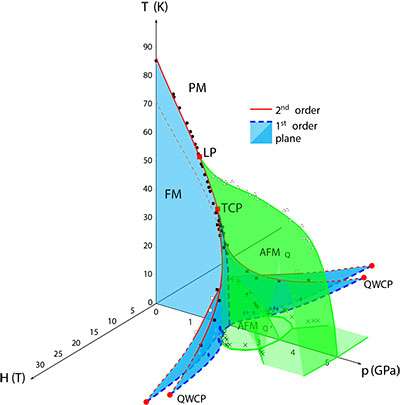Physicists "learn the rules" of magnetic states in newly published research

Ames Laboratory scientists have found new insight to the "rules" of how magnetic states emerge and are suppressed, creating a guide for discovery of other materials with superconducting capabilities. The discovery was made through the study of the transition metal compound LaCrGe3 under temperature, pressure, and magnetic field changes.
These findings are in a newly published paper in Nature Communications Materials and are part of Ames Laboratory's broader scope of condensed matter research dedicated to discovering new and novel states of magnetism.
"If we find transition metal-based systems with some sort of magnetism and suppress it to lower and lower temperatures, sometimes new states like superconductivity pop up, and that's what we hope for," said Paul Canfield, a senior scientist at Ames Laboratory and a Distinguished Professor and the Robert Allen Wright Professor of Physics and Astronomy at Iowa State University.In the case of LaCrGe3 the ferromagnetism is suppressed and, for certain pressures and fields, new antiferromagnetic states emerge. "By studying how magnetism is suppressed," said Canfield "we are beginning to learn some of the rules for when superconductivity, or other novel states, appear and when they don't."
More information: Udhara S. Kaluarachchi et al. Tricritical wings and modulated magnetic phases in LaCrGe3 under pressure, Nature Communications (2017). DOI: 10.1038/s41467-017-00699-x
Journal information: Nature Communications
Provided by Ames Laboratory





















